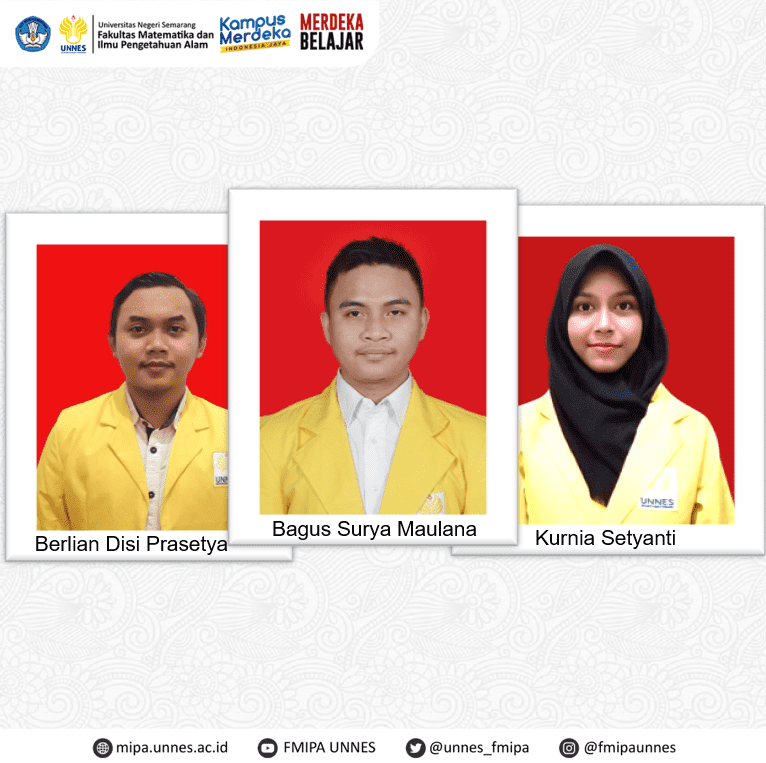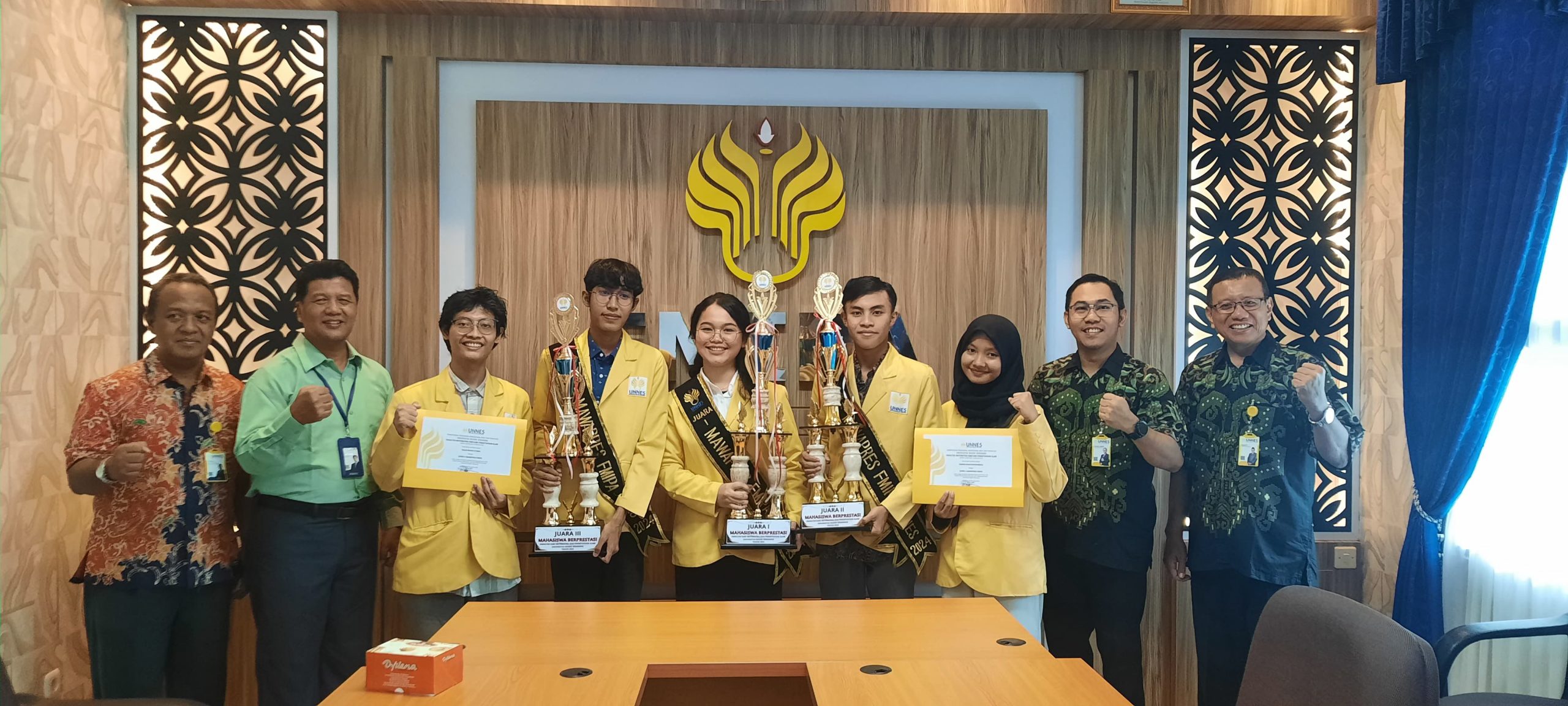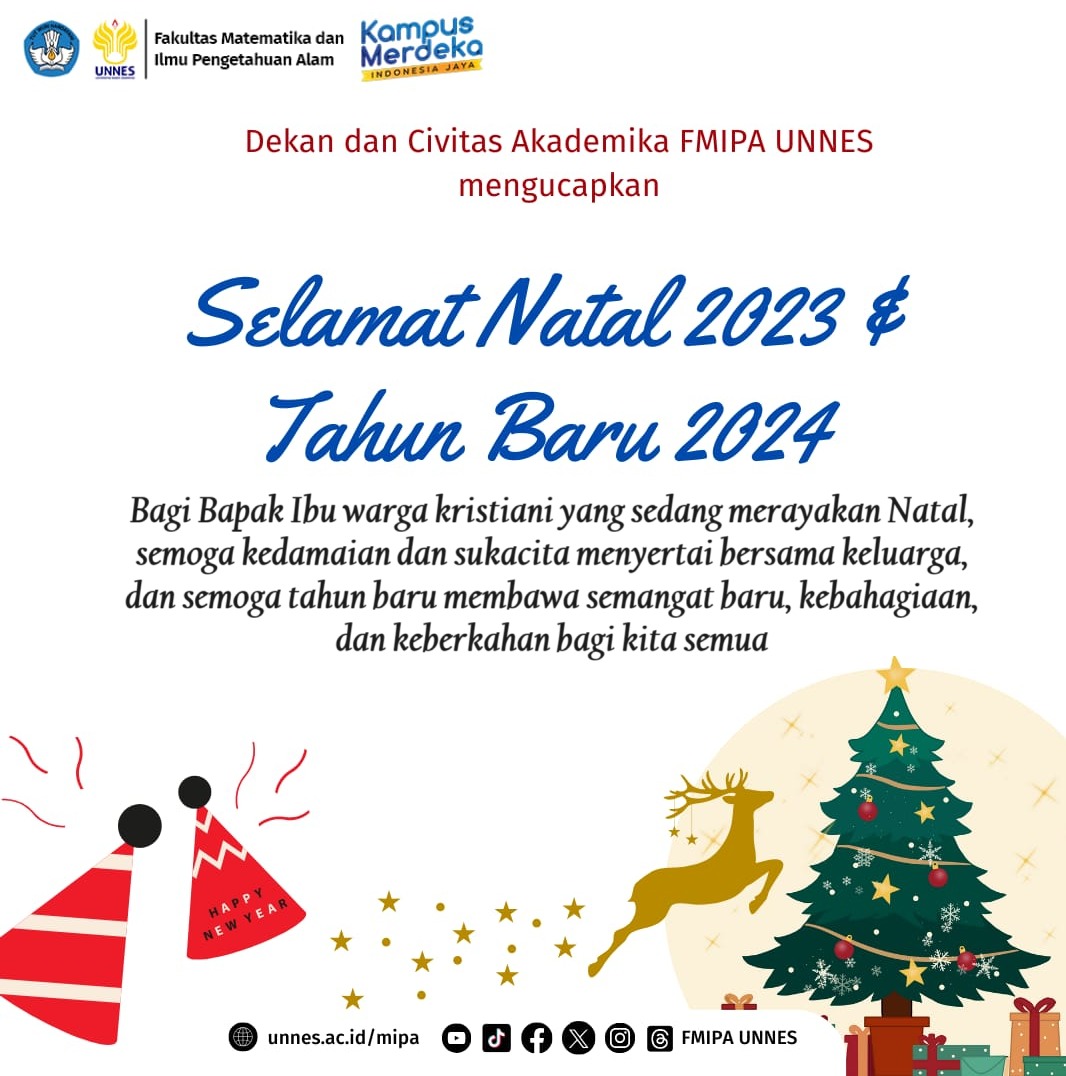
Bagus Surya Maulana is a student of the Mathematics Education Study Program, class of 2020, currently active in the Mathematics Student Supervisory Board 2022. Kurnia Setyanti is a student of the Mathematics Education Study Program, class of 2020, currently active in the Mathematics Student Association 2022. Berlian Disi Prasetya is a student of the Mathematics Education Study Program, class of 2020, currently active in the Executive Board of FMIPA Student Council UNNES 2022.
In realizing Indonesia Emas (Golden Indonesia) amidst digitization in various fields, the ability of computational thinking through mathematics education is considered necessary. This is also for the achievement of one of the SDGs goals. Through the learning process in the classroom, Computational Thinking skills can be developed to support the achievement of Indonesia Emas 2045. One of the learning approaches that can enhance students’ Computational Thinking skills is mathematics education. As stated by Sanapiah & Aziz (2020), mathematical problems can be solved through Computational Thinking skills. This is in line with the opinion of Mufidah (2018) that Computational Thinking skills will be proportionate to students’ mathematical abilities because mathematics involves logical and systemic thinking that works in a similar way to algorithmic thinking in the field of computation. Thus, there is a relationship between mathematics education and the development of Computational Thinking skills in students.
Considering the connection between mathematics education and Computational Thinking skills, a medium is needed in the learning process. The chosen medium should have a significant influence on the development of Computational Thinking skills. According to Dewi et al. (2021), there is a significant influence and improvement in Computational Thinking skills using Scratch as a medium. Similarly, Sutikno (2019) argues that Scratch is a simulation program used for designing, developing, and analyzing animated presentations to demonstrate the basic functions or principles of a learning concept. Therefore, Scratch is highly relevant and suitable to be used as a medium for learning and developing Computational Thinking skills.
By utilizing animated graphics from Scratch, the topic of geometric transformations can be applied using this medium. Geometric transformations include concepts such as translation (shifting), rotation, reflection, and dilation (Hanafi, 2017). Therefore, Scratch is highly beneficial in aiding the learning of geometric transformations in mathematics.
The application of mathematics can also be found in various aspects of life, including culture. Indonesia is a country rich in culture, and one manifestation of Indonesian culture is batik. The use of batik-based mathematics education is expected to facilitate students’ understanding by allowing them to learn their own culture and introducing them to other Indonesian cultures. According to Muslimah et al. (2018), mathematics can also be applied to batik. It can be concluded that batik can indeed enhance students’ understanding of geometric transformations.
The urgency of Computational Thinking skills in shaping Indonesia Emas 2045 can be addressed through innovative efforts, such as mathematics education using Scratch with a batik-based approach to teaching geometric transformations. This learning approach is expected to develop students’ Computational Thinking skills, which will have an impact on Indonesia Emas 2045 while considering the existing SDGs.
This writing is part of a research conducted by a team for the Mathematics Paper Competition FIMNas 2022. The research aims to conduct a literature study on the use of Scratch as a mathematics learning medium to develop students’ computational thinking skills. The research method used was a literature review with three stages: organization, synthesis, and identification. Some of the research findings include the application of Scratch as a learning medium for batik-based mathematics education to develop students’ Computational Thinking skills, which is deemed necessary for further exploration. Additionally, a translation of batik motifs into geometric transformations through Scratch was discovered. This academic work in the Mathematics Paper Competition FIMNas 2022 achieved 2nd place and Best Presentation.




The use of Scratch as a tool to develop students’ Computational Thinking skills has been proven by several experts, as seen in the combination of Scratch with batik-based geometric transformation materials. Based on the results and discussions, the stages of using Scratch as a mathematics learning medium for batik-based geometric transformations were identified.

The innovation in this paper, regarding the utilization of Scratch as a medium, provides an interesting solution. Scratch allows users to create movements that can be applied to geometric transformations. To facilitate students’ understanding and introduce Indonesian culture, the topic of geometric transformations is formulated using batik motifs, which will be represented as patterns in Scratch using specific computational algorithms. The development of these computer algorithms will be linked to the enhancement of students’ Computational Thinking skills. Therefore, it is expected that the utilization of Scratch as a learning medium for batik-based geometric transformations in mathematics will develop students’ Computational Thinking skills.
References
Dewi, A.N., Juliyanto, E., & Rahayu, R. (2021). The Effect of Science Learning with Computational Thinking Approach Assisted by Scratch on Problem-Solving Skills. Indonesian Journal of Natural Science Education, 4(2), 492-497.
Hanafi, M., Wulandari, K.N., & Wulansari, R. (2017). Geometric Rotation Transformation Assisted by Geogebra Software. FIBONACCI: Journal of Mathematics Education and Mathematics, 3(2), 93-102.
Mufidah, I. (2018). Profile of Computational Thinking in Solving Bebras Tasks from the Perspective of Students’ Mathematical Logical Intelligence. Dissertation. UIN Sunan Ampel Surabaya.
Muslimah, M., Fadila, A., & Farida, F. (2018). Pocket Book of Geometric Transformations with Batik Motifs. Proceedings of the National Seminar on Mathematics and Mathematics Education. July 2018, Bandar Lampung, Indonesia, pp. 533-542.
Sanapiah, S., & Aziz, L.A. (2021). Analysis of Students’ Computational Thinking Abilities in Solving Mathematical Problems. Media Pendidikan Matematika, 9(1), 34-42.
Sutikno, S., Susilo, S., & Hardiyanto, W. (2019). Training on the Utilization of Scratch as a Learning Medium. Rekayasa: Journal of Technology Application and Learning, 16(2), 173-178.





